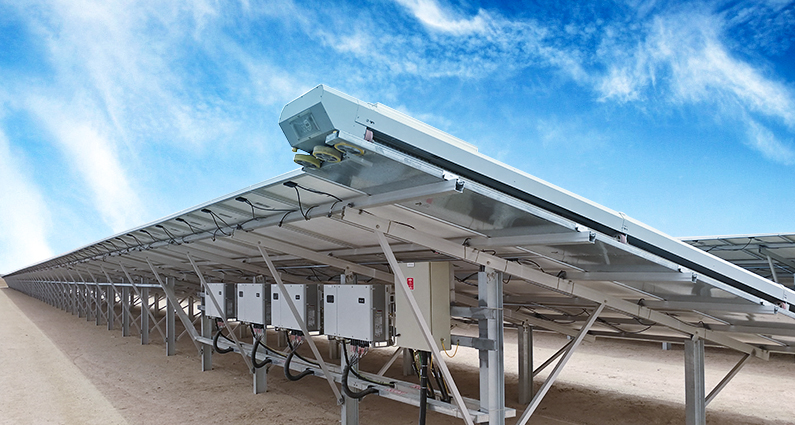The insulated-gate bipolar transistor (IGBT) is an inverter’s ‘heart,’ and a component which produces a considerable amount of heat while switching. However, IGBTs, printed circuit boards, and other electrical equipment start operating at lower efficiency levels when they reach a certain temperature. An increase of just 1-2 degrees above the maximum operating temperature – usually 90-110°C – can cut equipment lifetime in half.
Inverters lower their power output through a process called derating to avoid damaging themselves by overheating. Derating, however, has significant effects on a plant’s levelized cost of electricity (LCOE). The more efficient an inverter’s cooling mechanism, the later derating occurs. A quick look at inverter data sheets shows that most inverters can maintain operations at a maximum ambient temperature of around 60°C, but start derating at slightly above 40°C. Not all suppliers provide data on different outputs under different ambient temperature scenarios, but those who do, admit power losses of between 5% and 10% at an ambient temperature of 50-55°C, when compared to 30°C.
The switch from two to three-level architecture has allowed for more efficient high frequency switching without having to use higher voltage or IGBTs that could resist higher heat levels. In the past, many inverters had less than 96% efficiency, and most losses dissipated into heat inside the inverter cabin. Less heat is dissipated today, with efficiency rates beyond 98.7%. In making this step, manufacturers offset the effect of more efficient switching by increasing the power density of the inverters – making cooling an issue yet again.
If a project is located in the scorching heat of a desert, the point at which derating sets in is routinely surpassed. Plant owners then have to accept repeated low falls in production output, with adverse impacts to their LCOE. Installing a fan to more efficiently draw the heat from the inverter cabinet may seem an attractive solution, but dusty desert conditions and the ingress of small particles interfere with the functionality of the delicate electronics.
Huawei says it has found solutions to both of these desert challenges: using natural convection flows without fans to sufficiently dissipate heat. The system would work even with high-power inverters, such as its SUN2000-100KTL-H1 100 kW product. Via natural convection flows of hot air, heat dissipates through heat pipes onto a heat sink on the outside of the inverter. Huawei places heat generating components and sensitive parts in different compartments in combination with various thermal insulation strategies so that the build-up of hot spots in sensitive areas can be avoided. The smart PV technology giant says that because there are no air inlets, the solution is better for dust protection.
The innovative solution shows promise to utility-scale investors, particularly those with their eyes on the Middle East region. A system that works well under the scorching sun, without the cooling breeze of a fan, could have positive impacts on both market expansion and LCOE.
This content is protected by copyright and may not be reused. If you want to cooperate with us and would like to reuse some of our content, please contact: editors@pv-magazine.com.
